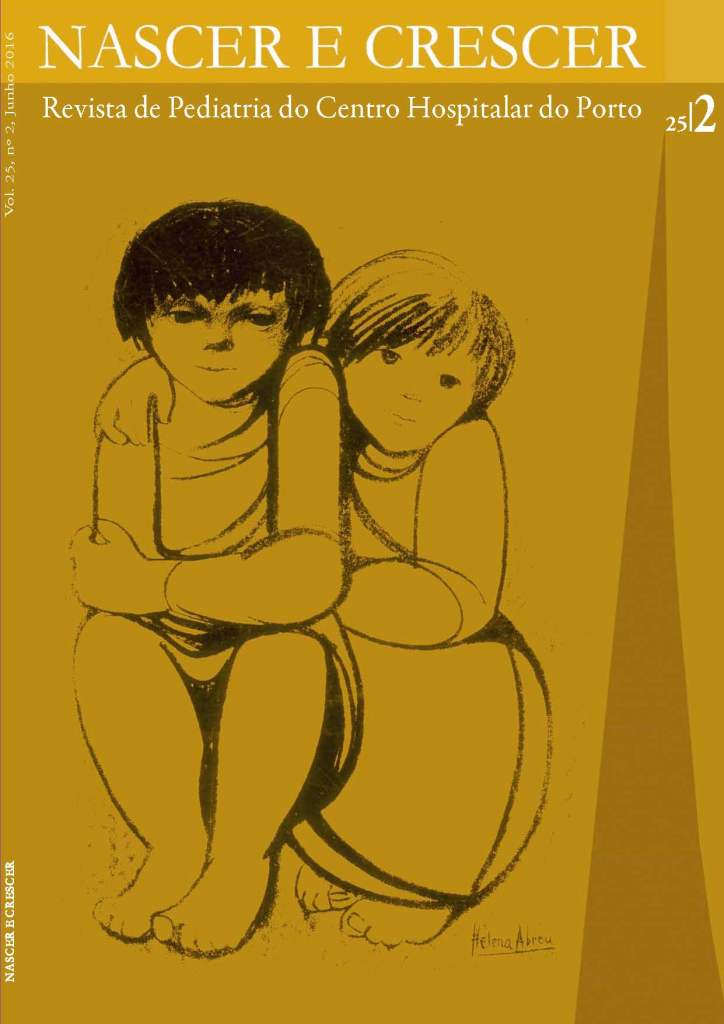HYPERSENSITIVITY REACTIONS TO CONTRAST MEDIA IN CHILDREN
DOI:
https://doi.org/10.25753/BirthGrowthMJ.v25.i2.9520Keywords:
Barium Sulfate, Contrast media, Delayed Hypersensitivity, Gadolinium, Immediate Hypersensitivity, Provocation test, Radiocontrast media, Skin tests.Abstract
Introduction: Even though diagnostic and therapeutic contrast-enhanced procedures are very frequently performed in clinical practice, the underlying contrast media may be associated with a wide range of hypersensitivity reactions.
Objective: Overview of epidemiology, clinical presentation, diagnosis and prevention of hypersensitivity reactions to contrast media in pediatric population.
Results: There are two major groups of contrast media: radiologic and non-radiologic, and both may cause hypersensitivity reactions. These reactions can be differentiated according to the time interval between contrast administration and the first appearance of symptoms as: immediate (when they occur during the first hour after administration) or non-immediate (when they occur between one hour up to ten days after administration). IgE-mediated and T cell-mediated immunologic mechanisms appear to be involved in these reactions, respectively. Clinical management aims to determine potential culprit and to identify alternative contrast agents via detailed anamnesis, skin tests and even a possible provocation test. In confirmed cases the culprit preparation should be avoided.
Conclusions: A systematic approach to cases of hypersensitivity reaction to contrast media contributes to prevent recurrent reactions and to administrate alternative contrast media more safely.
Downloads
References
Brockow K, Sánchez-Borges M. Hypersensitivity to ContrastMedia and Dyes. Immunol Allergy Clin North Am. 2014; 34:547-64.
Brockow K, Romano A, Aberer W, Bircher AJ, BarbaudA, Bonadonna P, et al. Skin testing in patients withhypersensitivity reactions to iodinated contrast media - aEuropean multicenter study. Allergy. 2009; 64: 234-41.
Pradubpongsa P, Dhana N, Jongjarearnprasert K, JanpanichS, Thongngarm T. Adverse reactions to iodinated contrastmedia: prevalence, risk factors and outcome - the results ofa 3-year period. Asian Pac J Allergy Immunol. 2013; 31: 299-306.
Comissão do Formulário Hospitalar Nacional deMedicamentos. Meios de Diagnóstico. In: FormulárioHospitalar Nacional de Medicamentos, 9ª edição. InfarmedAutoridade Nacional do Medicamento e Produtos de SaúdeI.P.; 2006. p. 227-46. Disponível em: http://www.infarmed.pt/formulario/formulario.pdf.
European Society of Urogenital Radiology. ESUR guidelineson contrast media. Version 8.1. Agosto 2015 (acesso a 12de Dezembro de 2015). Disponível em: http://www.esur.org/guidelines/pt/index.php#a.
Dillman JR, Ellis JH, Cohan RH, Strouse PJ, Jan SC.Frequency and severity of acute allergic-like reactions togadolinium-containing IV contrast media in children andadults. AJR Am J Roentgenol. 2007; 189: 1533-8.
Brockow K. Immediate and delayed cutaneous reactions toradiocontrast media. Chem Immunol Allergy. 2012; 97: 180-90.
Christiansen C. Hypersensitivity reactions to iodinatedcontrast media: an Update. In: Pichler WJ (ed). DrugHypersensitivity. Basel: Karger; 2007. p. 233-41.
Vervloet D, Pradal M, Castelain M. Drug allergy. 2nd ed.Uppsala, Sweden: Pharmacia and Upjohn; 1999. p. 197-207.
Cohan RH, Dillman JR, Hartman RP, Jafri SZ, Wang CK,Newhouse JH, et al. American College of Radiology Manualon Contrast Media. American College of Radiology. Version9.2013.
Vionnet J, Petitpierre S, Fumeaux A, Meuli R, Spertini F,Comte D. Allergies aux produits de contraste radiologiques.Rev Med Suisse. 2013; 812-8.
Dillman JR, Strouse PJ, Ellis JH, Cohan RH, Jan SC.Incidence and severity of acute allergic-like reactions to IVnonionic iodinated contrast material in children. AJR Am JRoentgenol. 2007; 188: 1643-7.
Trout AT, Dillman JR, Ellis JH, Cohan RH, StrousePJ. Patterns of intravenous contrast material use andcorticosteroid premedication in children-a survey of Societyof Chairs of Radiology in Children’s Hospitals (SCORCH)member institutions. Pediatr Radiol. 2011; 41: 1272-83.
Towbin AJ. The use of gadolinium-based contrast agents inchildren. Appl Radiol. 2015; 44(5) Suppl: 6-8.
Ring J, Messmer K. Incidence and severity of anaphylactoidreactions to colloid volume substitutes. Lancet. 1977; 1:466-9.
Brockow K, Garvey LH, Aberer W, Atanaskovic-MarkovicM, Barbaud A, Bilo MB, et al. Skin test concentrations forsystemically administered drugs - an ENDA/EAACI DrugAllergy Interest Group position paper. Allergy. 2013; 68: 702-12.
Schwartz EE, Seth N, Glick SN, Foggs MB, Silverstein GS.Hypersensitivity Reactions after Barium Enema Examination.AJR Am J Roentgenol. 1984; 143: 103-4.
Baig M, Farag A, Sajid J, Potluri R, Irwin RB, Khalid HMI.Shellfish allergy and relation to iodinated contrast media:United Kingdom survey. World J Cardiol. 2014; 6: 107-11.
Prieto-García A, Tomás M, Pineda R, Tornero P, Herrero T,Fuentes V, et al. Skin Test-Positive immediate hypersensitivity reaction to iodinated contrast media: The role of controlledchallenge testing. J Investig Allergol Clin Immunol. 2013; 23:183-9.
Barbaud A, Gonçalo M, Bruynzeel D, Bircher A. Guidelinesfor performing skin tests with drugs in the investigation ofcutaneous adverse drug reactions. Contact Derm. 2001; 45:321-8.
Wilkinson DS, Fregert S, Magnusson B, Bandmann HJ,Calnan CD, Cronin E, et al. Terminology of contact dermatitis. Acta Derm Venereol. 1970; 50: 287-92.
Chiriac A-M, Audurier Y, Bousquet P-J, Demoly P. Clinicalvalue of negative skin tests to gadolinium contrast agents.Allergy. 2011; 66: 1504-6.
Lindsay R, Paterson A, Edgar D. Preparing for severe contrast media reactions in children - Results of a national survey, aliterature review and a suggested protocol. Clin Radiol. 2011; 66: 340-8.
Li A, Wong CS, Wong MK, Lee CM, Au Yeung MC. Acuteadverse reactions to magnetic resonance contrast media-gadolinium chelates. Br J Radiol. 2006; 79: 368-71.
Grainger RG. Imaging, Intravascular radiological iodinatedcontrast media. In: Diagnostic radiology: A textbook ofmedical. In: Churchill Livingston, Oxford. 2001. p. 27.
Downloads
Published
How to Cite
Issue
Section
License
Copyright and access
This journal offers immediate free access to its content, following the principle that providing free scientific knowledge to the public provides greater global democratization of knowledge.
The works are licensed under a Creative Commons Attribution Non-commercial 4.0 International license.
Nascer e Crescer – Birth and Growth Medical Journal do not charge any submission or processing fee to the articles submitted.


